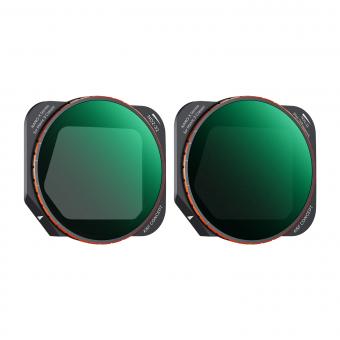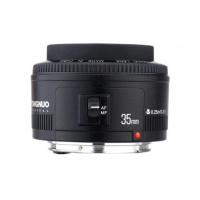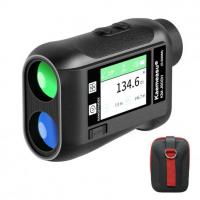Which Nd Filter Is Best For Mavic Pro?
When it comes to enhancing aerial photography and videography using the DJI Mavic Pro, choosing the right Neutral Density (ND) filter can significantly affect the quality of your footage. ND filters are particularly essential because they help manage the amount of light that enters the camera lens, thereby enabling more balanced and well-exposed images even in bright conditions. But with a variety of options available in the market, it is crucial to know which ND filter is best for the Mavic Pro based on different shooting conditions and user needs.

Firstly, let's briefly discuss the purpose of ND filters. ND filters reduce the amount of light reaching the sensor without affecting the color of the image. This is particularly useful in bright environments or when you want to use slower shutter speeds for effects like motion blur. For aerial shots, this helps maintain the ideal shutter speed-to-frame rate ratio, commonly referred to as the 180-degree shutter rule.
Here are some practical problems that users typically experience, and how they can select the best ND filter to address them:
1. Overexposure in Bright Sunlight:
Problem: Bright sunlight can often lead to overexposed shots, making the image lose details and appear washed out.
Solution: For very bright conditions, using an ND16 or ND32 filter on the Mavic Pro can significantly cut down on the light entering the lens. These filters are designed to handle extremely bright environments, like sunny beaches or snowy landscapes, ensuring that the images captured are not overexposed and retain all the necessary details.
2. Balancing Shutter Speed and Frame Rate:
Problem: Capturing smooth, cinematic videos often requires a certain shutter speed (typically double the frame rate). In bright conditions, achieving this without an ND filter can result in overexposed footage.
Solution: An ND8 or ND16 filter is ideal for balancing the shutter speed and frame rate in moderately bright conditions. They enable you to maintain the optimal shutter speed that complements the frame rate you are shooting at (e.g., 1/50s for 24fps), ensuring your video has a professional cinematic look with the appropriate amount of motion blur.
3. Enhancing Color Saturation and Reducing Glare:
Problem: Direct sunlight can cause unwanted glare and reduce color saturation in the captured footage.
Solution: ND filters not only control exposure but also enhance color saturation and reduce glare. An ND8 filter can be particularly effective for scenarios where there's direct sunlight but not overly intense brightness, such as during early morning or late afternoon shoots.
4. Dynamic Weather Conditions:
Problem: Weather conditions can change rapidly, especially when you're filming outdoors, making it challenging to consistently manage exposure.
Solution: Variable ND filters provide a flexible solution by offering adjustable light reduction. Although not as common in drone photography due to weight considerations, fixed ND filter packs often come with ND4, ND8, ND16, and ND32 options, allowing you to quickly swap filters depending on the changing light conditions.
5. Specific Creative Effects:
Problem: Sometimes you need specific creative effects like long exposure shots for silky smooth water or streaked clouds.
Solution: For such specific needs, ND64 or even ND1000 filters can be used. These are extremely powerful ND filters that allow for very slow shutter speeds, enabling you to achieve creative effects that are typically challenging in bright daylight conditions.
Based on user demands and practical challenges, here are some recommended ND filter sets for Mavic Pro:
- K&F Concept ND Filter Set: This set typically includes ND4, ND8, ND16 filters and is perfect for general-purpose use. It's a good starting point for amateur videographers looking to improve their footage quality without complicated setups.
While selecting ND filters, it's also essential to consider factors such as:
- Ease of Use: Choose filters that are easy to mount and remove from your Mavic Pro. Some filters require delicate handling, while others can be clipped on and off without much fuss.
- Weight: Ensure the ND filters are lightweight to avoid affecting the drone’s flight performance. Heavier filters can impact the gimbal's balance and the overall maneuverability of the drone.
- Optical Quality: Opt for filters that offer high optical clarity and minimal distortion. Cheap, low-quality filters can introduce unwanted artifacts and degrade the image quality significantly.
In conclusion, the best ND filter for your Mavic Pro fundamentally depends on the specific shooting conditions and the type of footage you intend to capture. For general usage in a variety of lighting conditions, an ND8 or ND16 filter typically provides excellent results. For extreme lighting conditions like bright sunny days or snowy landscapes, an ND32 would be more appropriate. Investing in a good quality ND filter set ensures that your footage remains consistent, professional, and visually appealing, regardless of the challenges posed by natural light. By adequately addressing the issues of overexposure, maintaining the right shutter speed, and enhancing color saturation, ND filters are indispensable tools for both amateur and professional drone photographers and videographers.






















![K&F Concept Selfie Ring Light with Cell Phone Holder for Live Stream and Makeup, LED Light [3-Light Mode] [10-Level Brightness] with Remote Control and Flexible Hose Bracket for iPhone Android【Ship to the US Only】 K&F Concept Selfie Ring Light with Cell Phone Holder for Live Stream and Makeup, LED Light [3-Light Mode] [10-Level Brightness] with Remote Control and Flexible Hose Bracket for iPhone Android【Ship to the US Only】](https://img.kentfaith.com/cache/catalog/products/us/KF34.001/KF34.001-1-200x200.jpg)

















